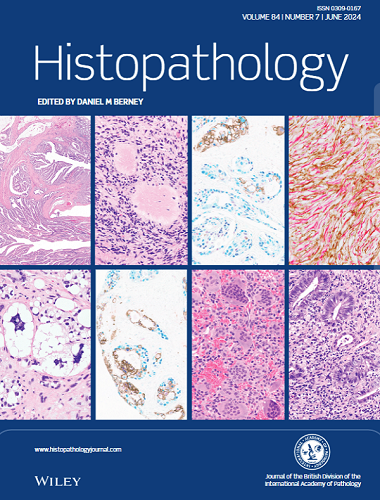Clinicopathologic, immunohistochemical and genomic characterization of urothelial carcinoma with myxoid and chordoid features
Abstract
Aims
To comprehensively characterize the clinicopathologic, immunohistochemical and genomic features of urothelial carcinoma with myxoid and chordoid features (UCMC), a rare histologic subtype of urothelial carcinoma with fewer than 50 reported cases in the literature.
Methods and results
We retrospectively identified and analysed eight cases of UCMC using clinicopathologic information, immunohistochemistry and molecular profiling by DNA next-generation sequencing. Genomic analysis revealed a heterogeneous molecular profile, with alterations previously implicated in urothelial carcinoma, including p53/Rb/cell cycle pathway genes (6/7 cases), histone modification genes (6/7 cases) and FGFR3/PIK3CA signalling pathway genes (5/7 cases). Actionable variants were present in 6/7 cases. Classification utilizing immunohistochemical surrogates for basal and luminal subtypes of urothelial carcinoma demonstrated mixed subtypes: three cases with a luminal profile, one case with a basal profile, two cases which were double negative and two cases with a non-specific profile. One case demonstrated a molecular and immunohistochemical profile consistent with plasmacytoid urothelial carcinoma, suggesting that myxoid and chordoid features may overlap with previously recognized histologic subtypes. The five-year overall survival rate was 75%, with varying stages at presentation (pT1–pT3).
Conclusions
UCMC represents a rare histologic finding, which can be associated with multiple molecular subtypes of urothelial carcinoma and can pose a diagnostic dilemma when identifying potentially aggressive histologic subtypes. It is uncertain whether UCMC represents a distinct histologic subtype, or (more likely) a histologic pattern acquired during tumour evolution. Further investigation is needed to fully understand the biological and clinical significance of this histologic pattern.


 求助内容:
求助内容: 应助结果提醒方式:
应助结果提醒方式:


